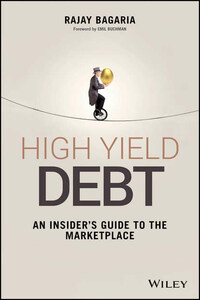This edition first published 2016
© 2016 Rajay Bagaria
Registered office
John Wiley & Sons Ltd, The Atrium, Southern Gate, Chichester, West Sussex, PO19 8SQ, United Kingdom
For details of our global editorial offices, for customer services and for information about how to apply for permission to reuse the copyright material in this book please see our website at www.wiley.com.
All rights reserved. No part of this publication may be reproduced, stored in a retrieval system, or transmitted, in any form or by any means, electronic, mechanical, photocopying, recording or otherwise, except as permitted by the UK Copyright, Designs and Patents Act 1988, without the prior permission of the publisher.
Wiley publishes in a variety of print and electronic formats and by print-on-demand. Some material included with standard print versions of this book may not be included in e-books or in print-on-demand. If this book refers to media such as a CD or DVD that is not included in the version you purchased, you may download this material at http://booksupport.wiley.com. For more information about Wiley products, visit www.wiley.com.
Designations used by companies to distinguish their products are often claimed as trademarks. All brand names and product names used in this book are trade names, service marks, trademarks or registered trademarks of their respective owners. The publisher is not associated with any product or vendor mentioned in this book.
Limit of Liability/Disclaimer of Warranty: While the publisher and author have used their best efforts in preparing this book, they make no representations or warranties with respect to the accuracy or completeness of the contents of this book and specifically disclaim any implied warranties of merchantability or fitness for a particular purpose. It is sold on the understanding that the publisher is not engaged in rendering professional services and neither the publisher nor the author shall be liable for damages arising herefrom. If professional advice or other expert assistance is required, the services of a competent professional should be sought.
Library of Congress Cataloging-in-Publication Data
Names: Bagaria, Rajay, 1977– author.
Title: High yield debt: an insider's guide to the marketplace / Rajay
Bagaria.
Description: Hoboken: Wiley, 2016. | Includes index.
Identifiers: 9781119134411 (hardback)
Subjects: LCSH: Junk bonds. | Capital market. | Business cycles. | BISAC:
BUSINESS & ECONOMICS / Banks & Banking.
Classification: LCC HG4651 .B294 2016 (print)
LC record available at http://lccn.loc.gov/2015042482
A catalogue record for this book is available from the British Library.
ISBN 978-1-119-13441-1 (hbk) ISBN 978-1-119-13443-5 (ebk)
ISBN 978-1-119-13442-8 (ebk) ISBN 978-1-119-23695-5 (ebk)
Cover Design: Wiley
Cover Images: Egg Image: © Excentro/Shutterstock
Unicycler Image: © ra2studio/Shutterstock
Today's U.S. corporate high yield market is worth over $2.5 trillion. That's more than the stock market capitalization of most countries including Germany, France, and Canada. Over 350 funds provide exposure to U.S. high yield including mutual funds, ETFs, and closed-end funds. In addition, a growing number of alternative funds such as distressed debt, mezzanine finance, and credit hedge funds also generate returns from high yield debt. High yield debt has never before been so accessible to both institutional and individual investors around the globe.
The attraction to high yield stems from its high risk-adjusted returns over time. High yield can be broken down into two market segments: high yield bonds and leveraged loans. Over the past 20 years, high yield bonds have produced high single-digit total returns comparable to the S&P 500 with less than half the annualized volatility.1 Leveraged loans have posted mid-single-digit returns with lower volatility than bonds and only one negative total return year in two decades.2 This performance is why pension funds, endowments, insurance companies, institutions, and retirees increasingly buy high yield as a source of current income and complement to dividend paying stocks.
Yet, despite its size and significance, high yield is an often misunderstood asset class. It's a market that is primarily traded over-the-counter and lacks transparency. It has also grown in complexity since its early “junk bond” days. What market professionals come to learn is that not all high yield exposure is the same: specific market segments and fund types can produce meaningfully different results over the same time period. Developing a more informed view of the market is what can lead to a performance advantage.
Working at leading investment firms has provided me with a front row seat to the latest developments in the high yield market during its most transformative period of growth. My first job out of college was in the investment banking program at J.P. Morgan & Co. I joined their high yield group at a time when the firm was pioneering the use of credit default swaps, a trillion dollar industry today. I later joined Goldman Sachs & Co., where I worked on a multi-billion dollar mezzanine fund that was a pioneer in making large-sized privately structured high yield debt investments. Following Goldman Sachs, I spent eight years at Apollo Investment Management where I was a Partner and Investment Committee member responsible for investments in all types of high yield debt through a business development company. More recently, I established a credit hedge fund with the backing of a prominent family office. This fund is engaged in both long and short investment strategies related to high yield bonds and loans and is a top performing high yield fund at the time of writing.








